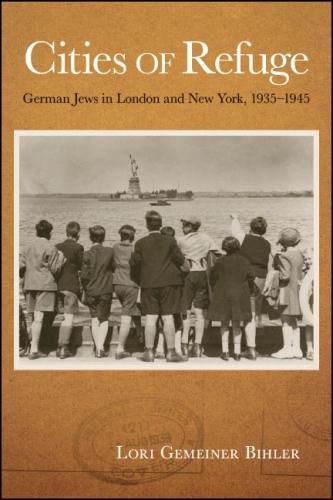Readings Newsletter
Become a Readings Member to make your shopping experience even easier.
Sign in or sign up for free!
You’re not far away from qualifying for FREE standard shipping within Australia
You’ve qualified for FREE standard shipping within Australia
The cart is loading…






In the years following Hitler’s rise to power, German Jews faced increasingly restrictive antisemitic laws, and many responded by fleeing to more tolerant countries. Cities of Refuge compares the experiences of Jewish refugees who immigrated to London and New York City by analyzing letters, diaries, newspapers, organizational documents, and oral histories. Lori Gemeiner Bihler examines institutions, neighborhoods, employment, language use, name changes, dress, family dynamics, and domestic life in these two cities to determine why immigrants in London adopted local customs more quickly than those in New York City, yet identified less as British than their counterparts in the United States did as American. By highlighting a disparity between integration and identity formation, Bihler challenges traditional theories of assimilation and provides a new framework for the study of refugees and migration.
$9.00 standard shipping within Australia
FREE standard shipping within Australia for orders over $100.00
Express & International shipping calculated at checkout
In the years following Hitler’s rise to power, German Jews faced increasingly restrictive antisemitic laws, and many responded by fleeing to more tolerant countries. Cities of Refuge compares the experiences of Jewish refugees who immigrated to London and New York City by analyzing letters, diaries, newspapers, organizational documents, and oral histories. Lori Gemeiner Bihler examines institutions, neighborhoods, employment, language use, name changes, dress, family dynamics, and domestic life in these two cities to determine why immigrants in London adopted local customs more quickly than those in New York City, yet identified less as British than their counterparts in the United States did as American. By highlighting a disparity between integration and identity formation, Bihler challenges traditional theories of assimilation and provides a new framework for the study of refugees and migration.